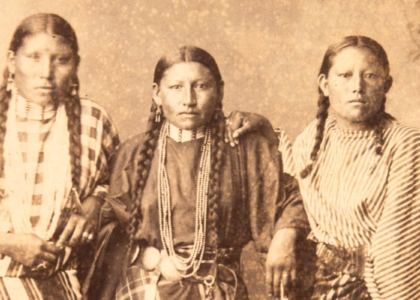“Let’s all do better at supporting queer lives and trans lives.”
Amy is joined by Dr. Marie Sarita Gaytán to discuss the life of Amelio Robles, who served during the Mexican Revolution and became one of Mexico’s earliest transgender icons.
Our Guest
Marie Sarita Gaytán

Marie Sarita Gaytán is an associate professor of sociology and gender studies at the University of Utah. Sarita writes and teaches in the areas of culture, globalization, Latinx studies, Latin American studies, gender and sexuality, and race and ethnicity. She is the recipient of Paper Awards from the Latin American Studies Association in the Mexico section, the American Sociological Association in the Latinx sociology section, and the National Association of Chicana and Chicano studies. Her book, ¡Tequila!: Distilling the Spirit of Mexico, was published in 2014 by Stanford University Press.
The Discussion
Amy Allebest: Welcome to Breaking Down Patriarchy, I’m Amy McPhie Allebest. To continue our series on Latin America, today we will be doing a deep dive into gender identity, and the setting is 19th and early 20th century Mexico. To start us off, I’m going to read a quote from the article that we’re featuring today about the development of photography in the 19th century and how photographs supplied a new way for people to present themselves.
This quote says: “Photographic portraits transformed visual body culture and made it possible for common people to fix their desired physical images in lasting prints. Something that until then had been done only through the portraits afforded to a few. Manufactured with the camera as intermediary, the desired body and social identity could be forever preserved in a photographic portrait and shown as often as one liked. Each time the portrait was viewed by oneself or someone else, the body image and the identity created by the photograph was confirmed.”
So today’s episode starts with a black and white photograph of a man in 1915 in Guerrero, Mexico. He’s wearing a cowboy hat and a suit. One hand holds a cigarette and the other pulls his jacket back slightly to reveal a pistol in his holster. His name is Amelio Robles, and he was a soldier in the Mexican Revolution. And to take us through his fascinating history and the gender dynamics that are present in his story is Professor Sarita Gaytán. Welcome to the program, Sarita!
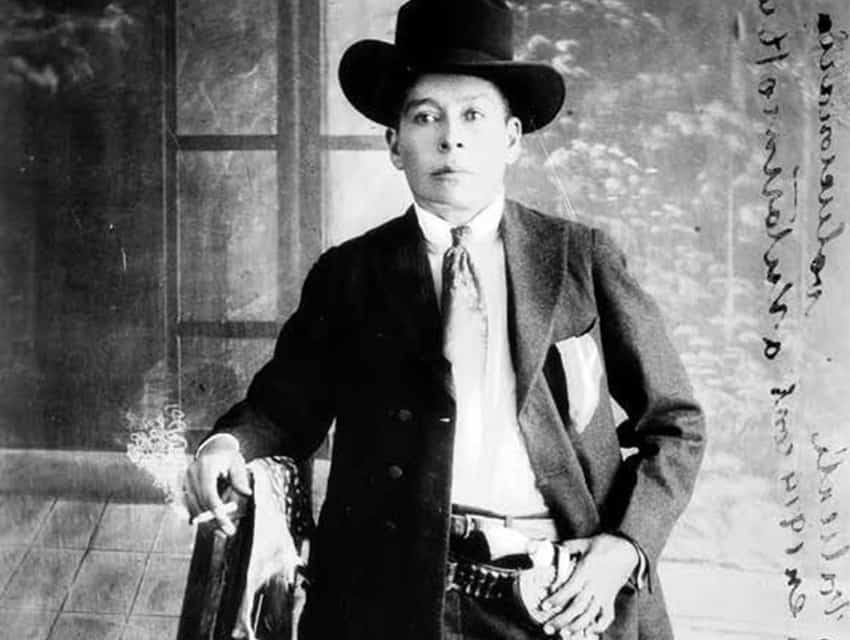
Marie Sarita Gaytán: Hi, thank you! Thank you for having me here.
AA: Thank you so much for being here. We’ll start with your professional bio first, and then I’ll ask you to introduce yourself a little more personally. Sarita Gaytán is an associate professor of sociology and gender studies at the University of Utah. Sarita writes and teaches in the areas of culture, globalization, Latinx studies, Latin American studies, gender and sexuality, and race and ethnicity. She is the recipient of Paper Awards from the Latin American Studies Association in the Mexico section, the American Sociological Association in the Latinx sociology section, and the National Association of Chicana and Chicano studies. Her book, ¡Tequila!: Distilling the Spirit of Mexico, was published in 2014 by Stanford University Press.
So you have a rich and vast background, it looks like, that you bring to this topic. And I’m so excited to hear what your thoughts are on this whole story that you recommended. But first, if you can introduce yourself by telling us where you’re from and some things about you personally that have brought you to the work that you do today.
MSG: Sure. I am from a suburb of Los Angeles, California. I’ve been in Salt Lake City now for eleven years. I am the child of immigrants, my father is from Chile and my mother is from Ireland. I lived over three years in Mexico while I wrote and investigated my dissertation on the topic of tequila. And I currently work, as you mentioned, in two departments in sociology and gender studies at the University of Utah. And I’m really excited to talk to you today about Amelio Robles, who is what feminist historians believe to be one of the first documented transgender figures in Latin American history. And I’m just going to emphasize not the first obviously transgender person, but one of the first documented figures that we know of, who’s also a revolutionary hero.
AA: Yeah, this was so interesting to me and something I never would’ve thought of. And the article that you recommended that I read, that I believe you’ve taught in your classes, right Sarita?
MSG: Yes.
AA: It’s called “Unconcealable Realities of Desire: Amelio Robles’s (Transgender) Masculinity in the Mexican Revolution” and this article is by Gabriela Cano. And I’ll say to listeners also to make sure for this episode, it’ll be especially important to look at the website because we’ll post all of these photographs on the website and on social media @bdownpatriarchy. So if you’re interested in seeing the photos, that really enriches the experience. So I think we’ll just conduct this conversation interview style, and I’ll ask you questions and you can guide us through this story. So I guess the first question is who was Amelio Robles?
MSG: Amelio was born in the late 19th century. He lived until 1984, so he spans almost a century. He fought in the Mexican Revolution and then continued his career in the Mexican military. In his early years living in Xochipala, which is a very small community even today, Amelio was born to a family of ranchers, which meant that they were landowners. And before and during the revolution, this meant that they were actually kind of well off. So they were small-medium landowners. And most Mexicans at this time, and I should say even in the present day, were not landowners.
AA: So can you help us set the scene a little bit too by talking about what the social norms were at the time regarding gender in Guerrero, because I think that’s where they were. Is Guerrero the state in Mexico and then they were from a tiny little town?
MSG Yes, Guerrero is a state. And I think one of the more popular cities in Guerrero would be Acapulco.
AA: Oh, sure. Okay.
MSG And Guerrero is north of Acapulco, but again, it’s a very rural community. And in most places in Mexico at this time – and most places, I should say, in the world – women worked in the home. They held domestic responsibilities. But they also worked the land. And in Xochipala, because most folks were subsistence farmers, they were expected to contribute to the economy. Their own kind of living situations. So it was very likely that Amelio as a female identified person was working in the home doing domestic duties, but was also expected to contribute to working the land. And we know that Amelio rode horses and handled weapons, right? He had a gun. But most women globally, this was the time when the ideology of separate spheres really dominated the landscape. The ideology of separate spheres, of course, holds that men are in one sphere that is the public sphere, and women dominate the private.
But of course, social class also matters a great deal. And so in places like Victorian Britain, middle class families and upper class families were really dominated by this ideology. But for the working classes and for poor folk, you always had to work, right? So women were doing double duty. The separate spheres didn’t necessarily rule their lives because they were doing the domestic chores and also working. So those were kind of like the gendered norms.
The ideology of separate spheres, of course, holds that men are in one sphere that is the public sphere, and women dominate the private. But of course, social class also matters a great deal…
AA: I remember from the article that when Amelio was young, and the author does refer to this person with feminine pronouns when she was born and named Amelia and lived as a girl and a young woman and went to a Catholic congregation for young ladies and stuff. And so they would have been in the girls’ part of the community, and it would’ve been assumed that she would grow into a young woman and marry a man.
MSG: Oh, absolutely.
AA: But at some point in Amelio’s mind, and we don’t have personal journals to know what it felt like inside, I don’t think. But how did Amelio transition?
MSG: So from what we know, Amelio’s transition seemed to happen during the Mexican Revolution. The dates are somewhere between 1911 and 1921, and it happened amid the environs of the war, of the battle. And so you have to remember again that Amelio is from rural, isolated Guerrero. And during the war, which involved the entire country, you’re in the trenches, right? You’re surrounded by destruction. All soldiers, not just Amelio, are embodying a different persona, right? You are a different identity. So everybody, in essence, all soldiers are like trans identities, right? You are becoming somebody else if you really think about it.
AA: Interesting.
MSG: So during this period that Amelio transitions into their masculinized self, the revolution by way of some more context in Mexico, to this day they do not have a number of how many people died in the revolution. Some people say 1 million, some people say 3 million.
AA: Wow.
MSG: So Amelio joins the forces in the south with the Zapatistas. And folks are relying on other people for their lives, for survival. I mean, this is like a heightened sense, like the milieu of war at this time especially, so much is happening. You leave and you don’t know if you’re going to see anybody ever again. You’re surviving in bunkers with the person next to you. That heightened sense of–
AA: Life or death.
MSG: Life or death! That moment is when this transition happens.
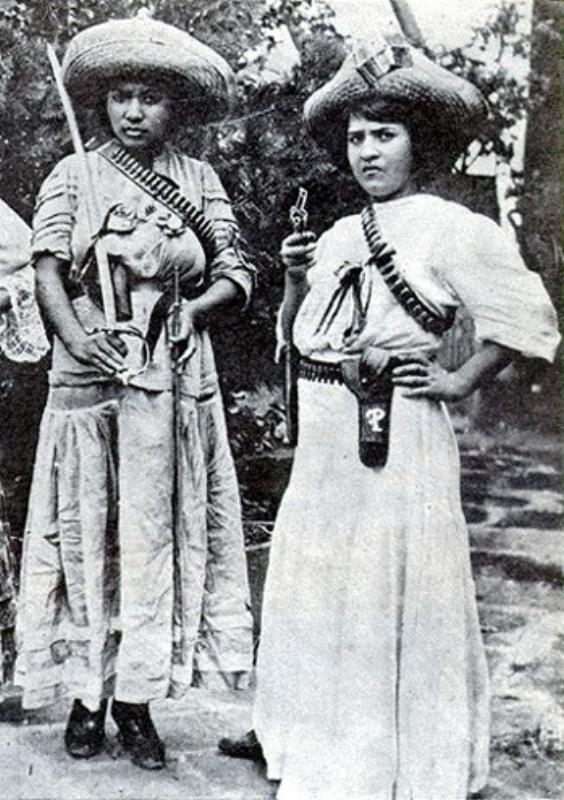
AA: Can I ask a question? Because I’m trying to remember from the article, is this kind of like a Mulan situation where Amelia is like, “you know what, I’m going to sign up for war” but then decides to start wearing men’s clothing and does the hair differently and enlists? Or were there other women who were fighting as soldiers in the war?
MSG: We know that women were definitely fighting in the revolution, that is, joining in the revolution as soldaderas, which means that they were doing very gendered work. There was also this thing called strategic transvestism, where women would temporarily dress as men and they would do this very likely to stay safe to protect themselves during, again, this heightened violence that always takes place during every war. And some of these women did this strategic move because they wanted to participate in combat instead of just taking on this very gendered role, these gendered positions like helping to cook or helping to nurse wounded soldiers. Even within their own ranks, there was a lot of resentment for women being on the field. So the soldaderas have this kind of strange position where folks resent them, folks don’t want them around. So for many reasons, women dressed strategically as men.
So we don’t know if that was the initial entree for Amelio, but we do know that Amelio does take on, sticks with, and desires at some point to embody what Cano talks about as “masculinization”. That it was a desired masculinity that was not temporary. So I think the difference is that for some people it was temporary, but for Amelio it was a radical transformation. And there was definitely this sense that the female identity that they were assigned at birth was not sitting right for them. And that this was the opportunity to remake themselves in every kind of aspect. And according to Cano, at least, he felt like a man. And that wartime scenario offers him this opportunity that perhaps staying in rural Guerrero didn’t.
AA: So what I’m remembering is that for women who fought as soldaderas, they enlisted in the war, they would dress as men, they would maybe do things they would never have done in regular civilian life. But then when the war was over they’d go back home and re-assume the feminine presenting and go back to life as a woman. But for Amelio, that was a permanent change and it was his way to transition. I want to ask how the military reacted to Amelio, especially because you said he fought in the revolution initially but then signed up as a permanent male soldier, right? How did the military react to that?
MSG: Well, first let me just back up and say that the Mexican Revolution ends in a success! There’s a constitution and those who survived, because again many people died, those soldiers were emulated as heroes. And so everyone then at the end of the revolution is venerated and so the military, given that context, they admired all folks who fought in the revolution. They were perfectly fine with Amelio joining the military. And we know that even when he tries and gets medical certificates, that the confederation of veterans of the revolution attest his age, health, and we know that he gets bullet wounds, right? He gets shot. They don’t mention his sexual anatomy.
AA: Okay so they’re doing detailed examinations because I think he had a bullet wound in his thigh. It’s not like they don’t know. They see but they just don’t mention it.
MSG: Correct. And you know, they’re happy to honor Amelio’s self-identification as a veterano, as you mentioned. But also recognize Amelio’s own self-description of his own gender. So that’s huge for the time.
AA: Yeah. And I do want to mention too, for listeners who don’t speak Spanish, that you can’t escape gender in Spanish. There really are no neutral ways of describing a person. Do you want to talk about that? Veterano versus veterana or soldadero versus soldadera.
MSG: Right. So a veteran in English is a veteran. You’d have to make the clarification a female veteran if one wanted to. So veterano as opposed to veterana is a clear signal that they were honoring his gender identification. That’s the state recognizing this trans figure.
AA: Yeah. Which is remarkable because like you said, there were women who had fought in the war and would be acknowledged as veteranas, and so it wasn’t like there wasn’t a women’s box that they could have put him in. They could have, but they chose not to. They chose to honor him, which is great and so surprising! I was so surprised the whole time I read this article.

Okay, so how did other people react outside of the military in maybe the neighborhood or the community? How did they react to Amelio? Did he go right back to the town where everybody would’ve known him? And how did people respond to him?
MSG: So this is where there’s a bit of speculation. Our author is kind of putting the pieces together a little bit. It seems like Amelio returns to Guerrero and that folks don’t initially know, perhaps like his family members, it seems like they understand and recognize and honor Amelio’s identity. But other folks don’t know because a lot of time has passed. And folks aren’t like gender policing people because again, decades have passed and here comes this war hero. Heroization is a gendered masculine trait with these ideas about personal daring and sacrifice, right? This is equated now in Mexico with patriotism. You’re a war hero. The revolution is now becoming in Mexican popular culture and in film and in songs an icon of Mexican culture. So patriotism, masculinity, heroization are all fused together. So here comes Amelio and people can’t disentangle that. So here’s this hero, this man. You’re not going to question one’s identity like that. Again, it’s his inner circle who kind of understands that Amelio has transitioned. And they make the occasional joke, because now Amelio is a colonel in the Mexican army, has moved up the ranks, which is also a phenomenal thing to have done. And they kind of joke with him, “mi coronela”. Again, that gendered language that you just referenced. Kind of like a wink and a nod. And it seems that Amelio lets those folks who are close to him say those kinds of things to him. But it seems like other folks, he’s not very happy to let them in on his identity.
AA: Yeah, I remember in the article it said that he would take out his pistol if anyone called him a woman or a lady. But at the same time, like you said, his super close friends would tease him a little bit. So I guess you would have to be really, really close for him to take the teasing okay. If you are not, he did not like it at all. And then, like you said, his family accepted the transition. That was, again, so surprising. And I remember from the article it said that his grand-nieces addressed him as uncle or grandfather and some of them only learned his sexual identity at birth after they became adults. They didn’t even know as children because nobody ever talked about it. They just accepted. Which is again, surprising and really so lovely to think of his family being so accepting in the early 20th century. And in Mexico, which is a place that I would’ve thought of as having quite strict gender roles because of Catholicism. So interesting.
The next question I wanted to ask is how the press treated Amelio because they took an interest in his story, in the story of the Zapatista revolutionary, this war hero, like you said.
And the article said that the press and the stories that came out in the newspapers legitimized him. So how did that happen?
MSG: The press is evolving as a form of media. And they’re trying to figure out, do we report on Amelio? How do we report on Amelio? First of all, there’s competition in the press. We know that there’s Miguel Gil, who’s a reporter from El Universal, and then there’s another reporter from a competing newspaper. And we know that one is taking a sensationalist approach, and we know that Gil says some really homophobic reporting on other occasions but does not take a sexist, misogynist approach to their report on Amelio. And I think part of that is mediated by how Amelio’s participation in the revolution really provides him a safety net. Number one. And number two, because of his masculinization, because of his presentation of self. Because of how he conformed to the ideals now that’s sedimented in this post-revolutionary period of the ideal of Mexican manhood. And because Gil the reporter buys into this idea of what it means to be a man, and being a man for him is like being this kind of macho presenting figure. And that being a man was about stature, presentation, attitude, perhaps holding a gun and not being afraid to use it when they needed to. So the media, I think, was trying to figure out how they were going to present him, with one version of the media deciding to not go the sensationalist route and the other sort of slipping into the sensationalist route. But also knowing that they risk losing readers if they go with the exposure of talking about this revolutionary hero as a type of homosexual. Amelio is not a homosexual. And then you’d have to unpack that, explain it, and do all of this other work around that story and risk isolating readers and those people who are loyal to those who fought in the revolution.
AA: I remember this part in the article thinking it is kind of exposing the misogyny in the culture that for Gil, like you said, he could not tolerate male homosexuality. Men acting in an effeminate way was really repugnant to him, but he was more willing to see Amelio as a masculine spirit that was trapped in a woman’s body. And it was kind of like, “well you poor thing, I’m so glad that you came over onto the better side.” So it just showed the status of masculinity as so much higher than femininity. And so they had some tolerance and some acceptance of Amelio, but wouldn’t have if it had gone the other way.
MSG: Oh yes, absolutely. And I’m glad you said that because this kind of ties on to what was also happening in the broader society in relation to this new discipline that comes out of Europe and then also in the United States that had made its way to Mexico, and it was this idea of sexology. And sexology basically is the concern or the study of human sexual behavior. One of the key ideas that was developed during this time was this notion or this theory of “sexual inversion”. So Gil as a reporter very likely studied, perhaps gone to university and is keyed into these kind of hip ideas. So sexual inversion theory is basically this idea that gay men and lesbians were sexual inverts. People who appeared physically male or female on the outside but felt internally that they were of the “opposite” anatomical sex. And that is, of course, according to the gender binary. So lesbians then were understood as man-ish, and gay men were effeminate. And effeminate as related to femininity was always seen as a sign of weakness of character. And I think that still holds true today in the 21st century. I just read a study this week about the difficulties of effeminate men reaching higher managerial positions in tech companies. And that was a global study that just came out recently, so we can still see the residual effects.
…gay men were effeminate. Effeminate as related to femininity was always seen as a sign of weakness of character. And I think that still holds true today in the 21st century...
AA: I’ll say this too, I was just at a basketball game last night and I was there with some people who are a generation older than I am, and it was a college basketball game and there was a male cheerleader front and center, dancing his booty off and clearly so full of joy. And the rest of the people on the cheer squad are very clearly female. And for me, I’m still adjusting. I’m in my forties and that’s something that’s new to me, but I process it just fine. And boy, the generation older than me was having a hard time processing that in a kind and understanding way. And I thought about it as I was driving home and I just thought it was so hard, especially for the men in the group I was with, to see a man presenting in a way that that is thought of as feminine. And I thought that they could have been at a women’s basketball game and seen a bunch of women presenting in a way that is typically understood as masculine and they wouldn’t have batted an eye. A while ago they would’ve said, “what are those women doing on the basketball court?” But it is still more acceptable, I feel, for people to present in a masculine way than in a feminine way. It just draws more ire.
MSG: Absolutely. I think we live in a patriarchal society and under patriarchy, masculinity is valued.
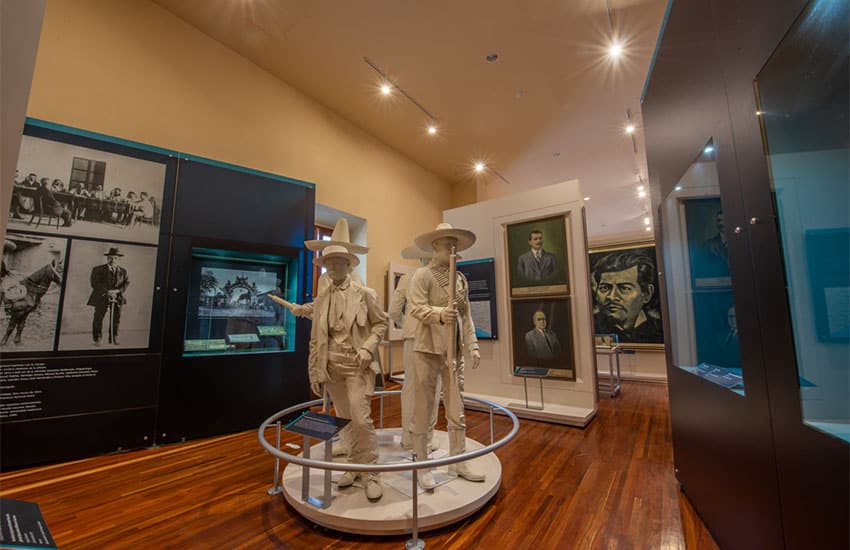
AA: Right. So interesting. Well, and to go back to what you were saying about sexology, I couldn’t believe that that existed in the 19th century. That’s basically the beginnings of queer theory and I did not know that that existed so long ago. It was so interesting to see people trying to figure that out.
MSG: I mean, if you think about it too, sexology is a response to hundreds and hundreds of years of people going to the clergy and relying on the Church to explain to them about these unusual people. And so sexology is a radical break, it’s an attempted scientific break from the reliance on different faiths for coming up with magical explanations, right? Sexology is actually modern.
AA: Okay, so the next part of this story is how Amelio was remembered. And it was so interesting, as we’ve already talked about, to see how he was really accepted by his family, quite respected in the community, even in the press pretty respected. And so I was surprised at the end of the story to find that even though Amelio had been recognized as a trans man during his lifetime, on his tombstone it describes him with feminine pronouns and with his original name that he was given at birth, Amelia. Then by the 1980s he was remembered as a revolutionary woman, and there’s a museum dedicated to Amelio called ‘La Coronela Amelia Robles’. So how did that happen?
MSG: I mean, there’s a lot going on there because again, there’s lots of filling in the blanks that we don’t know. We hear from our author that there was a rumor that on their deathbed, Amelio asked to be recognized as Amelia. Now, we don’t know if that’s true or not, but if that is true, one could speculate that that could be related to ideas around faith and patriarchy and belief in religion, you see what I’m saying?
AA: Yeah, like maybe he was having some anxiety about the afterlife.
MSG: Perhaps, or about what that would mean for the family, I don’t know. Again, we don’t know because we don’t even know if that’s true. It could be that the family made that up to protect themselves, to put off any kind of speculation that might come for generations in the future. We don’t know. We just don’t know what the truth is. And so we should think about this as multiple truths kind of vying for reality. This is only speculation, so it’s kind of not fair for any of us, but we have to rest with the facts that we will not know. But I will say the naming of the school or the museum, their decision doesn’t seem that they were honoring Amelio. That decision, I think, is one where there’s some feminist critique because Amelio only allowed their close inner circle to use that nickname or apodo, which is a very common word in Mexico because you have your nicknames. Again, that wasn’t meant for public consumption. And if you think about it too, even with your tombstone, that’s an intimate base. Amelio wasn’t like a Marilyn Monroe figure where everyone was going to go visit their tombstone. It wasn’t for public consumption.

AA: One of the other pieces of the puzzle was the journalist Gertrude Duby. Do you want to talk about her?
MSG: I’m still, to be honest with you, trying to process all of that. Gertrude Duby is a foreigner who comes in from Europe, lands and spends some time in Mexico, and becomes a little bit taken with Amelio’s story. So we can see Duby as this outsider who’s kind of impressing their own fetish gaze on Amelio and kind of assigning her own meetings to him. In a way that, for one, she’s taking photos almost like an anthropologist going out into the wild and finding this original figure. And Duby is using “la coronela”, naming Amelio with their female name. So Duby’s kind of violating Amelio as well, like this outsider violating. And perhaps maybe this is like a foreshadowing of what’s going to happen to Amelio as the 20th century unfolds. The violence that’s going to happen symbolically to trans lives as ideas of trans becomes more visible.
AA: Interesting. Yeah, there’s this part of the story when Duby’s in town, I guess, and she’s visiting and interviewing Amelio, I think. And she stays in his house with him and she emphasizes when she writes her article, and calls him Amelia, and says “she made me dinner and prepared my bed for me.” And so I think she had an agenda that she wanted to claim this person as a feminist icon, and so she needed Amelio to be a woman so that she could be more relatable to Mexican women. Like, “Be empowered like this woman!” And again, it’s more like she wants to paint the story like it’s Mulan or Yentl or someone who dresses up to be a man but really it’s a woman because women have to dress as men. And she is completely missing the whole real gender identification of this person. She just has this agenda that she wants this person to be Amelia.
MSG: Yes. So Duby is about Duby. This is about Duby making some claims to show Duby’s importance and this is less about Amelio’s celebration of Amelio’s identity and Amelio’s importance on Amelio’s terms. This is about Duby making claims on Duby’s terms.
AA: And that’s kind of where the article leaves off, is how Amelio Robles lives on in public memory, and it really does seem problematic. And like you said, it’s worthy of critique, I think, to see how this person who would brandish his gun if you called him a lady or made a joke about it when he was alive… I don’t think he would be happy with how he’s been remembered.
MSG: I would say yes, but on a follow-up back, it’s been several years since I’ve taught this article and more historians have elaborated on Amelio’s life on the internet. And social media folks have taken up Amelio as a queer icon. I’m so happy to see that. And there’s more articles in Spanish on him and more articles circulating in broader Latin American circles as well. So Amelio’s story has been retaken again, so it doesn’t end with Duby, it doesn’t end with the school.
AA: Good.
Duby’s kind of violating Amelio as well…And perhaps this is a foreshadowing of what’s going to happen to Amelio as the 20th century unfolds. The violence that’s going to happen symbolically to trans lives…
MSG: So I just want to say on that positive note that there’s a politics of reclamation around Amelio that I think is generative and positive and hopeful.
AA: Oh, that’s wonderful. Yeah, I’m really glad to hear that. And to tell you the truth, with all of the work and the progress that’s been done in the past few decades, maybe I’ll just end by giving people the benefit of the doubt and say maybe even Gertrude Duby, if she had known better, she would’ve done better too. And maybe if she were alive now, she would’ve said “that was a mistake, I didn’t understand that.” And I’m grateful for all the progress that continues to be made. So yeah, thanks for taking us to that positive note to wrap up the story.
MSG: Yes, yes, yes.
AA: Well, this has been fascinating. I learned so much, and I’m so grateful to you for being with us today, Professor Sarita Gaytán at the University of Utah. Thank you so much for being here!
MSG: Well, thank you so much, Amy. Let’s all do better at supporting queer lives and trans lives. Thank you so much.
AA: Hear, hear. Thank you so much.
they wanted to participate in combat instead of just taking on this very gendered role,
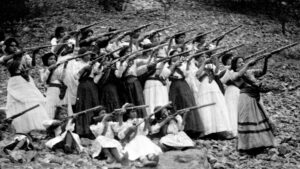
like helping to cook or helping to nurse wounded soldiers.
Listen to the Episode
&
Share your Comments with us below!


